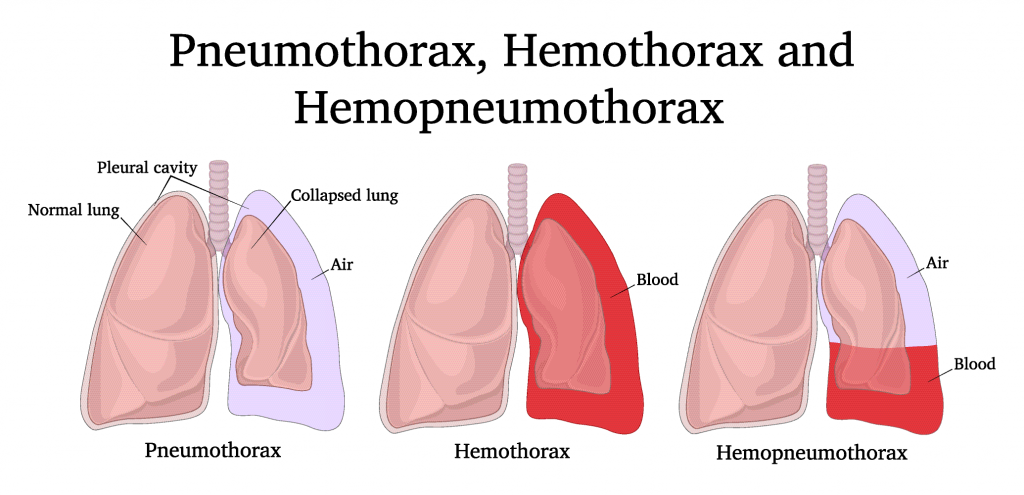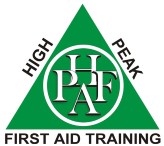Pneumothorax means air in the chest cavity. There is no way of knowing if the underlying lung is also damaged. Note the different, American spelling in the diagram below.
The lungs are covered in a pleurae that are serous membranes that cover the lungs and thoracic cavity. The visceral pleura covers the lungs and the parietal pleura covers the internal surface of the thoracic cavity making the pleurae one continuous covering of squamous cells supported by connective tissue
The visceral and parietal plurae meet at the hilum of the lung. The hilum is a triangular shaped area located at the inner mid point of each lung. This area also allows bundles of nerves to go to each lung. The parietal plura and visceral plura have a “potential” space between them that contains serous fluid. When a person takes a breath in, the ribs move out and upwards. This action expands the lungs as the serous fluid is creating surface tension between the two plurae.
In the event of a puncture to the chest wall and/or lung, it is possible for air to enter into this space, causing the lung to collapse.
Scenario 1: Puncture to chest, air enters the chest cavity and pressure builds up causing the lung to collapse. For air to enter the chest cavity, the puncture would need to be more than 2/3rds the diameter of the trachea. A solution would be to cover the puncture to stop air going in. However, scenario 2 below could be happening.
Scenario 2: Puncture to chest and the lung. Air enters the chest cavity if the puncture is large enough, but air is also entering the trachea, to the lungs and then leaking out the puncture in the lung. The lung is now collapsing under the pressure. If air is stopped from entering the lungs by placing a dressing over the puncture on the outside, the lung will still collapse.
Scenario 3: Blunt force trauma can cause the alveoli to rupture and then air will enter the pleural space causing the lung to collapse
If you are still with me at this point, we can also add blood into the mix. You can see the diagram below shows pneumothorax, haemothorax and haemopneumothorax.

In a high percentage of penetrating chest trauma, the skin around the wound will self-seal. This means a good chest examination is necessary if trauma is suspected. A wound may be found that is “sucking” air into the wound with the presence of bubbling blood.
During the course, you will see a variety of chest seals, used for puncture wounds.




